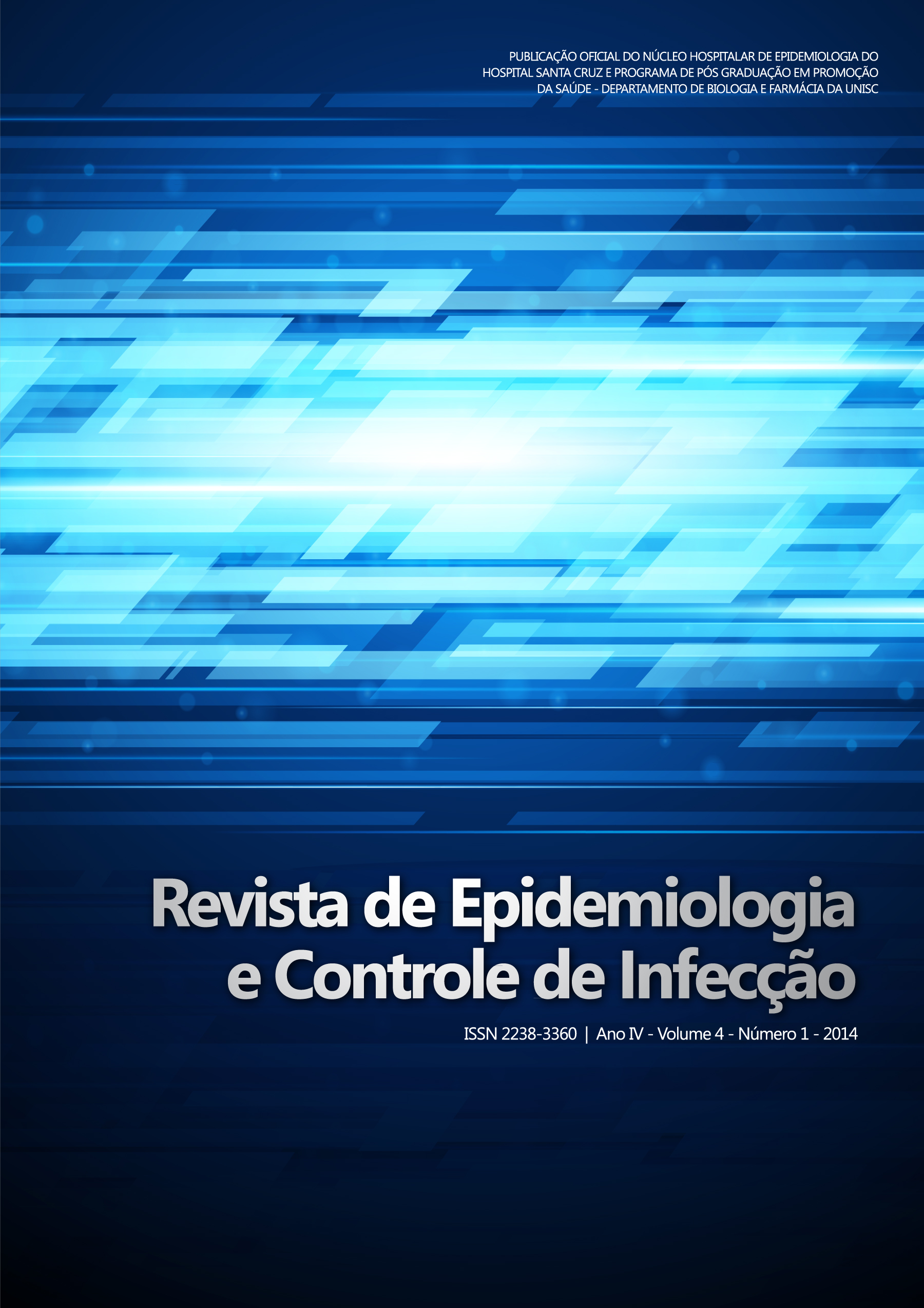Prozone effect in the diagnosis of syphilis using the vdrl method: experience of a reference service in southern Brazil
DOI:
https://doi.org/10.17058/reci.v4i1.3959Abstract
Backgound and Objectives: Syphilis is a systemic infectious disease caused by the spirochete Treponema pallidum. VDRL (Venereal Diseases Research Laboratory) test is the most often used laboratory method for syphilis diagnosis. The prozone effect may occur in 1% to 2% of patients, especially at late stages of syphilis and during pregnancy. The objective of this study was to evaluate the frequency of this effect in analyses performed at Laboratório Regional de Santa Cruz do Sul do Laboratório Central do Rio Grande do Sul, from April to May 2013. Methods: A descriptive study was performed, in which 2018 samples were analyzed by the VDRL method and subsequently, low titers (≤ 1:4) were confirmed by the immunoblot method. Results: A total of 68 (3.37%) samples were positive, of which 49 (72.1%) belonging to women and of these, 38 (77.5%) pregnant women. The VDRL method showed no prozone effect. The 32 samples with titers ≤ 1:4 were confirmed by the treponemal method, resulting in 6 false-positive results, of which 4 were observed in pregnant women. Conclusion: Although not prozone effect was observed in this study, it was concluded that the VDRL method results must be evaluated individually, with the possibility of confirmation through the treponemal test.Downloads
Downloads
Published
How to Cite
Issue
Section
License
The author must state that the paper is original (has not been published previously), not infringing any copyright or other ownership right involving third parties. Once the paper is submitted, the Journal reserves the right to make normative changes, such as spelling and grammar, in order to maintain the language standard, but respecting the author’s style. The published papers become ownership of RECI, considering that all the opinions expressed by the authors are their responsibility. Because we are an open access journal, we allow free use of articles in educational and scientific applications provided the source is cited under the Creative Commons CC-BY license.


